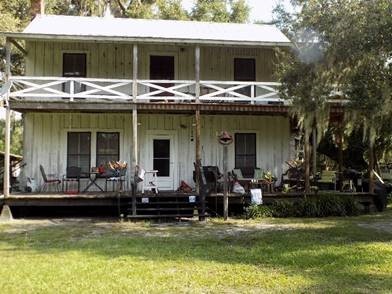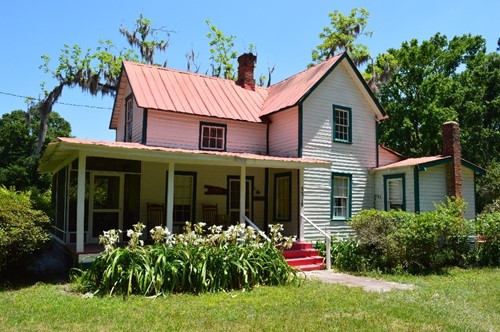
For Immediate Release
Friday, September 27, 2019
Contact: Sarah Revell
850-245-6522
[email protected]
Secretary Lee Announces the Designation of Two “Florida Cracker” Houses on the National Register of Historic Places
Tallahassee –
Secretary of State Laurel M. Lee announced today that Shell Hammock Landing in Polk County and the Henry C. Arpen House in Duval County have been listed on the National Park Service’s National Register of Historic Places.
“Shell Hammock Landing and the Henry C. Arpen House are deserving additions to the National Register of Historic Places,” said Secretary Lee. “These properties are excellent examples of Florida Cracker architecture and are representative of the State’s early pioneer settlement.”
Shell Hammock Landing is located near the oxbow of the Kissimmee River in Lake Wales, Florida. The property consists of a two-story rooming house built in 1881 and the ruins of a steamboat dock. The site was used historically by steamboat passengers traveling the Kissimmee River and served as a place where passengers could stop for a short rest or stay overnight and enjoy activities such as hunting and fishing. Steamboats were the main form of transportation along the Kissimmee River until roads were built in the 1920s.

The house is also significant as an example of Florida Cracker architecture with its wood-frame construction, wrap-around porches and a tin, side-gabled roof. Florida Cracker homes reflect the needs of early settlers coping with the tropical climate prior to air conditioning. The homes are always built of locally available wood and have large porches and overhangs to provide shade. Large windows and breezeways encourage cross-ventilation, and the overhangs allow the windows to remain open even during rainstorms. The house now serves as a private residence.
The Henry C. Arpen House is a two-story wood frame residence located in the community of Mandarin in southeast Duval County. The home was built by Henry C. Arpen around 1880 during Florida’s post-Civil War citrus boom. The Arpen House is a rare and outstanding example of Florida Cracker style architecture with many of the original elements of the home preserved.
Since the home pre-dates the railroad era in Florida, pre-fabricated and mass-produced construction materials such as windows were not easily obtained. Therefore, the windows in the Arpen House were built locally by hand, without uniform measurements, making each one unique. Local oral history indicates that the Arpen House was built using materials salvaged from a wrecked barge that had beached on the St. Johns River.

The Arpen house is located on a 17-acre tract of land that was once part of the Joseph Hagins Spanish Land Grant, one of the earliest private land holdings in Florida. Following the death of Joseph Hagins and his son Josiah, the original land grant was subdivided into large lots, several of which were purchased by Henry C. Arpen, a citrus grower. Historically the home was surrounded by an orange grove, but the majority of the grove was lost to the freezes of the late 19th century. A few remaining citrus trees are scattered throughout the property. The Arpen family maintained ownership until the 1930s. Today, the home remains a private residence, as the current owners continue to preserve one of the oldest surviving homes in Mandarin.
###
About the National Register of Historic Places
The National Register of Historic Places is a list maintained by the National Park Service which includes historical or archaeological properties including buildings, structures, sites, objects, and districts, that are considered worthy of preservation because of their local, statewide and/or national significance. Nominations for properties in Florida are submitted to the National Park Service through the Florida Department of State’s Division of Historical Resources. Florida has over 1,700 listings on the National Register, including 295 historic districts and 175 archaeological sites. There are more than 50,000 sites contributing to the National Register in Florida. For more information, visit flheritage.com/preservation/national-register. For more information about the National Register of Historic Places program administered by the National Park Service, visit nps.gov/nr.
About the Florida Department of State’s Bureau of Historic Preservation The Bureau of Historic Preservation (BHP) conducts historic preservation programs aimed at identifying, evaluating, preserving and interpreting the historic and cultural resources of the state. The Bureau manages the Florida Main Street Program, and under federal and state laws, oversees the National Register of Historic Places program for Florida, maintains an inventory of the state's historical resources in the Florida Master Site File, assists applicants in federal tax benefit and local government ad valorem tax relief programs for historic buildings, and reviews the impact that development projects may have on significant historic resources. For more information, visit flheritage.com/preservation.
